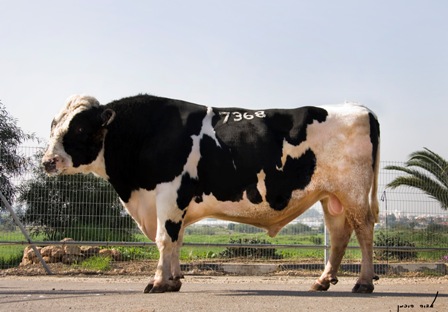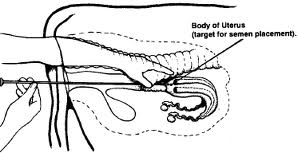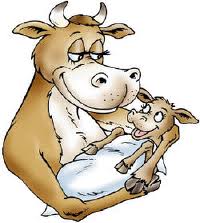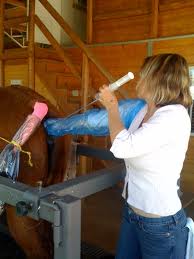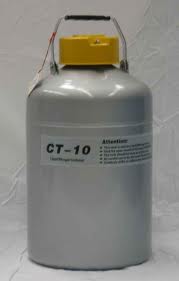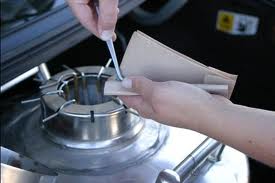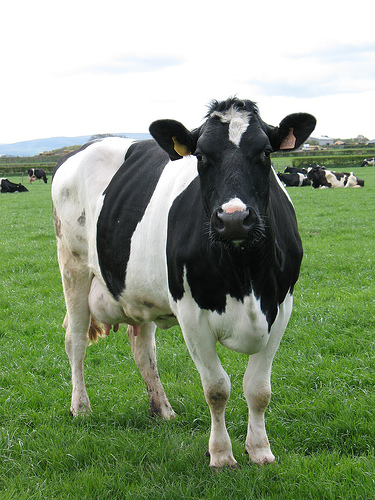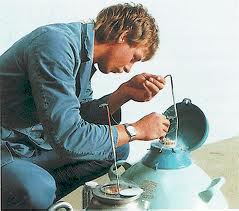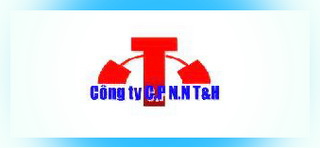AI / Semen
Speaking at a recent Pfizer press briefing on somatic cell counts (SCC), Dr Ynte Hein Schukken from Cornell University said that somatic cells are a crucial part of the normal function of a healthy cow. Written by Charlotte Johnston, TheCattleSite junior editor.
The normal reproductive tract of the cow consists of the vulva, vestibule, vagina, cervix, uterine body, uterine horns, uterine tubes, infundibula and ovaries, as well as the broad ligament which suspends these structures within the pelvic and abdominal cavities (3,4,5,8). In the heifer (a female bovid up to the birth of her first calf), the overall size of the reproductive tract may be small enough such that all internal structures are located within the pelvic cavity. However, in the normal multiparous cow, much of the reproductive tract cranial to the cervix (and possibly including part of the cervix) lies beyond ones reach, cranial and ventral to the pelvic brim within the abdominal cavity (5,10). In these animals, the key to reliable examination of the reproductive tract by rectal palpation is successful retraction of the entire uterus into the pelvic cavity (10). The following illustrations are intended to provide the novice with a step-by-step description of this procedure, as well as guidance in the basic examination and evaluation of specific structures.
An overview of the latest understanding of the genetic regulation and physiology of important aspects of fertility from the final scientific report from the EU group, Sustainable Animal Breeding (SABRE) subtitled 'Cutting Edge Genomics for Sustainable Animal Breeding'.
The Jersey cow is a relatively small cow, bred around the world for use in the dairy industry. The Jersey is the second most popular breed of dairy cow in the world, behind only the Holstein. Jersey cows thrive in all climates and temperatures. Known for early maturity and easy calving, Jersey cows can have their first calves as early as 19 months old. Dairy farmers typically breed cows all year, using artificial insemination, to maintain milk production. Hobby farmers may choose to use a live bull instead.
Cost-efficient production of milk is the first indispensable step towards the survival of dairy operators, farmers and processors alike -but the real challenge goes far beyond and regards the market as a whole, including eventual particularities of consumer demand and taste. Since the milk produced on the farm constitutes the exclusive raw material for the entire dairy industry, the accent is on quality. In recent months, the board of directors* of the Israel Dairy Board (IDB) decided and ratified the new standards for milk quality, for the time being at the dairy plant gate.
The UK is fortunate to have many great breeds of dairy cow, and over the years these have been bred to suit the wide variety of management systems, climates and dairy products we enjoy in this country, said Peter Willies, Nocton Dairies Ltd, at the British Cattle Breeders Conference.
Recently, a field study conducted by Fabio Lima, Carlos Risco, Albert De Vries, Jose Santos, and William Thatcher, from the University of Florida, compared reproductive performance of lactating dairy cows in a commercial dairy farm with cows bred by natural service (NS) or timed artificial insemination (TAI). A second study using the data from this field trial was performed to compare the cost of these two breeding programmes.
RobustMilk is a project that has been funded through the EU Framework 7 Programme to join together six world-leading research organisations within EU that are actively working in dairy cattle breeding and have strong links with the dairy industry. It is called Innovative and Practical Breeding Tools for Improved Dairy Products from More Robust Dairy Cattle abbreviated to RobustMilk for ease of use (and speed!), explained Roel Veerkamp, at the British Cattle Breeders Conference 2011.













